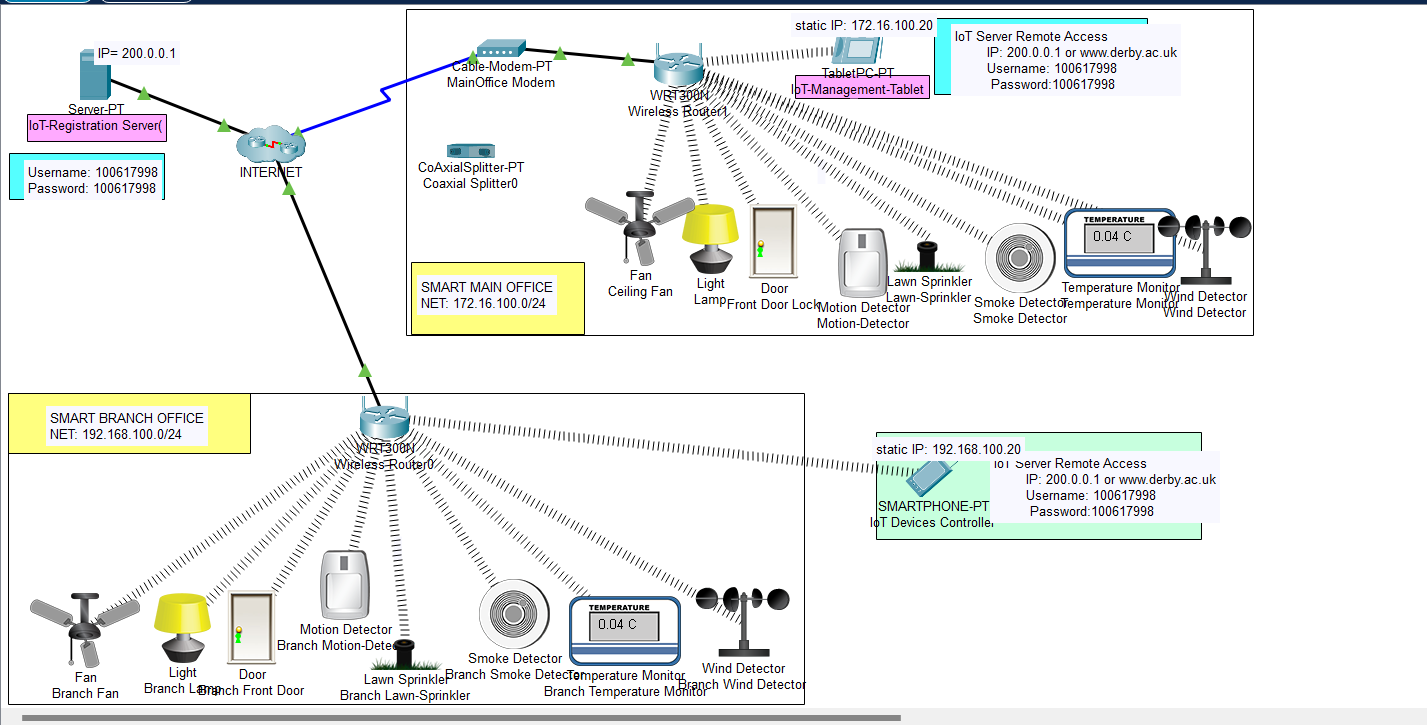Smart Home IoT Network System Design and Implementation
Scenario Description: Smart Home IoT Network:
The Smith family aims to modernize their home with smart technology to enhance convenience, security, and energy efficiency. The new network design leverages cutting-edge IoT technologies integrated with robust networking practices for seamless communication between smart devices and the internet. This case study details the design, implementation, and key technologies utilized in creating an efficient smart home network.
Assessment Criteria/Marking Scheme:- IoT Registration Server: Centralized management and registration of all smart home devices.
- IoT Monitoring and Smart Devices: Enable real-time monitoring and control of various smart devices.
- IoT Conditions Programming: Implement programmable conditions for automated responses to specific triggers..
- VLANs (Virtual Local Area Networks): Segment network traffic to improve security and isolate IoT devices from primary data traffic.
- DHCP (Dynamic Host Configuration Protocol): Automate the assignment of IP addresses for all connected devices.
- SSH (Secure Shell): Enable secure remote management of network devices.
- WLAN (Wireless Local Area Network): Provide wireless connectivity for employees and guests.
- Cable Modem and ISP Routers: Connect the company network to the internet.
The network topology below satisfy the user requirements above and everything is verified, tested and working fine.
